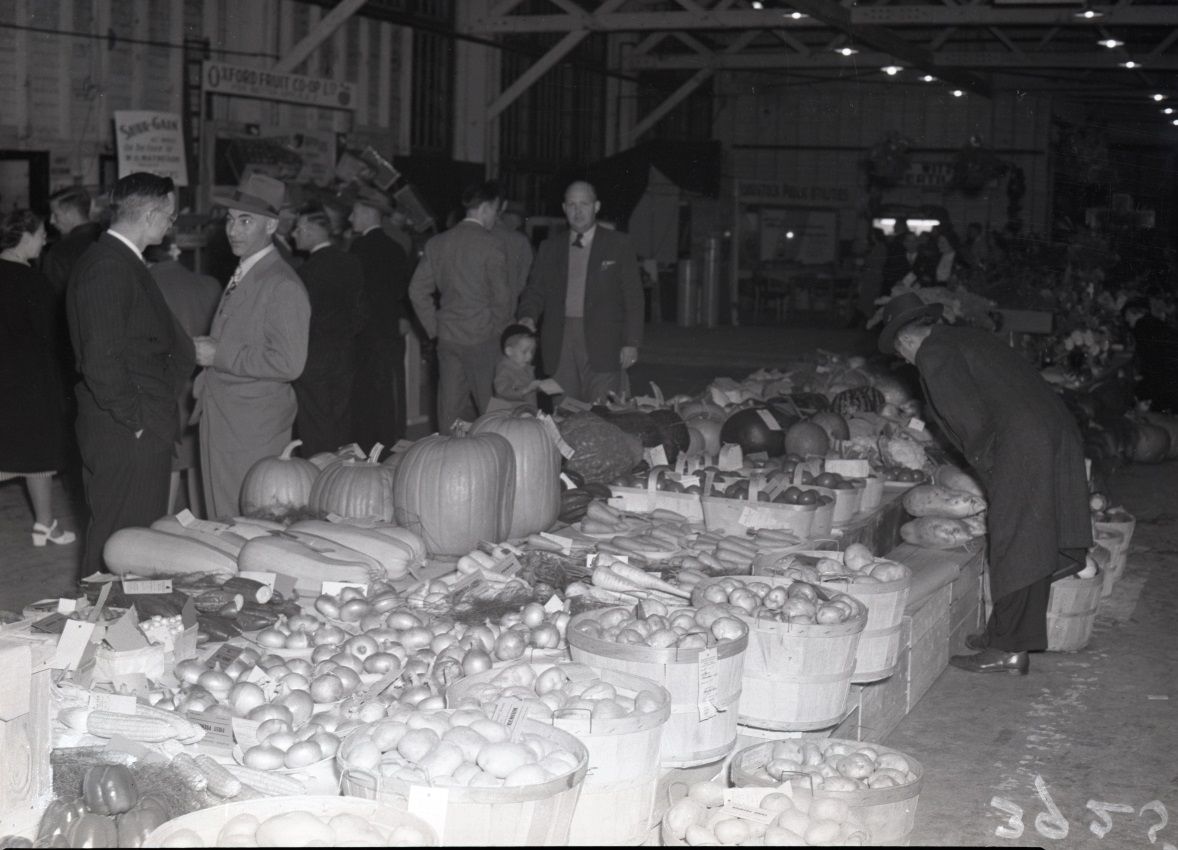Thanksgiving Pies
Thanksgiving Pies
Squash, apple, pumpkin, pecan...take your pick of these historical pie recipes from the 1910s, 20s, and 60s to try this Thanksgiving.
By Liz Dommasch, Archivist
Let’s be honest, the best part of any Thanksgiving dinner is the dessert! Archives staff thought it might be fun to dig through our cookbook collections and pull a number of recipes to help celebrate the holiday:
Pastry – Moffatts Cookbook (1926)
3 cups flour
1 egg
1 cup of Lard
¼ teaspoon of Baking Powder
A pinch of salt
Before putting on the top crust of apple pie add several small bits of butter. It improves the flavor. In making pie crust roll dough on one side only.
Apple Pie – The Art of Cooking Made Easy (ca. 1910)
This pie as usually made is very unsatisfactory, but with a little care, it may be made a dessert of rare excellence. The apples, which should be of good texture and fine flavor, should be pared and quartered – not sliced; then, if the apples are large, divide each quarter into three parts; if small, into two parts. Having lined the pie plate with a good crust, arrange the apples in it in an orderly and compact manner, making the centre a little higher than the sides. If a large pie is desired, mix a tablespoonful of flour with a cup nearly full of sugar, a few gratings of nutmeg and lemon, and a half teaspoonful of cinnamon, or any preferred flavoring, and sprinkle this mixture over the apples. Now add four tablespoons of water, and put on the top crust. With the edges of the under the crust, pinch the top one upon it, and prick the top several times with a fork, or slash it in the centre. Bake nearly an hour in a moderate oven. This pie is best the day it is baked. A small pie will, of course, require less seasoning.
Apple Custard Pie – Woodstock Cook Book (1917)
Peel and slice 1 large apple to each pie to cover the crust nicely, beat 1 egg, 1 cup sugar 1 cup sweet milk together, flavor with vanilla; pour this over the top of the apples and bake well.
Pumpkin Pie – Woodstock Cook Book (1917)
1 quart of strained pumpkin, 1 pint of milk, 1 teaspoon salt, 2 tablespoons flour, 1 teaspoon cinnamon, 1 teaspoon allspice, 3 eggs, 2 cups sugar.
Eggless Pumpkin Pie – Five Roses Cookbook (1915)
Cook pumpkin or squash tender. Rub through a fine sieve and measure off 3 cups. Over it grate half a nutmeg or its equivalent of orange peel. Add 1 ½ cups white coffee sugar. Moisten 4 heaping teaspoons cornstarch in ½ cup sweet milk and add to the pumpkin. Melt 1 tablespoon butter, add a little salt and stir into the pumpkin. Now add 3 3 full pints of sweet milk. Stir well and pour the mixture into crusts. Bake in a hot oven until slightly browned on top. When cold, spread the top of one or two with tart jelly, and note the improvement. The custard in these pies will not leave the crust at the edge, nor will any water gather on top when allowed to stand a few hours, as is often the case with those made in the usual manner with eggs.
Squash Pie – The Boston Cooking School Cook Book (1928)
1 cup squash, steamed and strained
1 cup heavy cream
1 cup sugar
3 eggs, slightly beaten
4 tablespoons brandy
1 teaspoon cinnamon
1 teaspoon nutmeg
¾ teaspoon ginger
¾ teaspoon salt
¼ teaspoon mace
Line a deep pie plate with puff paste. Brush over paste with white of egg slightly beaten, and sprinkle with stale bread crumbs; fill, and back in a moderate oven. Serve warm.
Pecan Pie – CKOX Party Line: Hints and Recipes for the Homemaker Vol. 3 (1965)
3 large eggs, slightly beaten
1 cup corn syrup
1/8 tsp. salt
1 scant cup of white sugar
2/3 cup pecans
1 tsp. vanilla
Mix all ingredients, leaving the nuts until last. Pour into an unbaked pie shell. Bake at 450° for 10 minutes, then reduce oven heat to 350° for 30 minutes. Test when the pie is done, by inserting the blade of a silver knife into centre. When it comes out clean, the pie is finished.
***Note: The recipes that call for sweet milk, are referring to just plain old milk.

Image credit:
COA123 1.168 Crowds viewing fruits and vegetables on display at Woodstock Fair. – [late 1940s – early 1950s]. – Negative: b/w; 10.5 x 8 cm.
